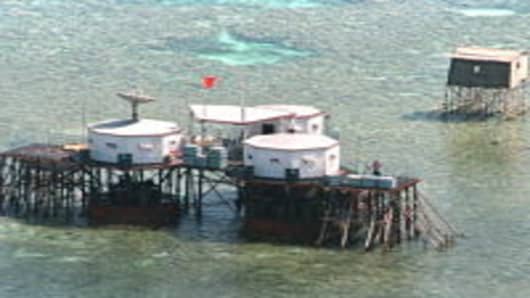The growing tension between China, Vietnam and the Philippines in the South China Sea could lead to a miscalculation and further escalation between the parties, a former advisor to U.S. Vice President Dick Cheney warned on Friday.
His warning comes a day after the Financial Times reported that a Chinese ship had confronted an Indian navy vessel shortly after it left a Vietnamese port in July.
"I think generally, the biggest risk is miscalculation. It's very unusual for this kind of stuff to be happening so broadly," Stephen Yates, President of DC International Advisory and a former deputy assistant to the U.S. Vice President on national security affairs, said. (Watch the full interview here.)
His warning follows a report in June from the Lowy Institute that saidthe risk of war because of Chinese actions in the disputed seas was rising.
Analysts say the risks are growing because of a mixture of existing territorial disputes and new assertiveness by China.
"I think fundamentally there are differences and claims that have not been resolved and China has enlarged its claims," Simon Tay, Chairman of the Singapore Institute of International Affairs told CNBC.com. "With a rising assertiveness of China the unresolved claims have become more of a sticking point."
Tay also agrees that one or two incidents could spark a broader conflict, which would impact trade flows in the region, further worsening an already fragile global economy.
What's surprising analysts is that such high level tensions are usually reserved for the seas further north, where China and Japan have been locked in a long-standing dispute over the Japanese controlled Senkaku islands, which China claims and calls the Diaoyus. Last year a Chinese trawler rammed Japanese patrol boats in the disputed area, sparking a major diplomatic incident.
"In the southeast we haven't had the same kind of nationalistic sentiment," Tay said. "This is being quite stoked - and it may become difficult to put the genie back in the bottle."
Still, Tay said a lot more is being done now than a year ago to cool things down. In late July, the ASEAN regional forum held a meeting in Bali and agreed to a code of conduct to resolve disputes between China and ASEAN members.
But Yates believes, as Japan and the U.S. remain preoccupied with their economic problems, China will continue to assert itself leading to more, not less tension in the region.
"I think what's happening is, perhaps, some parts of China's leadership see an opportunity of a vacuum (being created), where all these governments are pretty occupied on other issues, and they could advance issues in this sphere," Yates said.



